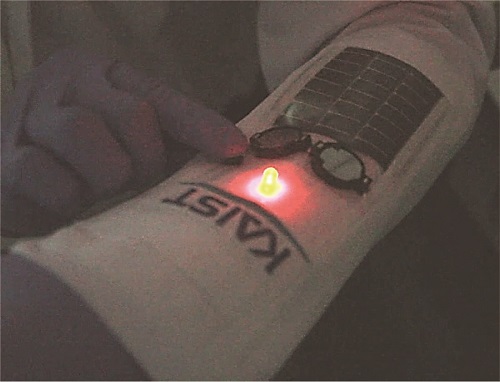By Warren Miller, contributing writer
Longer-lasting, more quickly chargeable batteries are in higher demand than ever before. Lithium-ion batteries are in everything from cellphones to electric vehicles, but they aren’t the only game in town, and there may be some new competition on the horizon. Researchers at the Korean Advanced Institute of Science and Technology (KAIST) have created a hybrid aqueous battery that is capable of fully charging in 20 seconds or less.
The aqueous hybrid capacitor is essentially a small amount of liquid electrolyte held between an anode and a cathode. The anode is made up of graphene-like polymer chain materials that have a high surface area and, therefore, higher capacitance. The cathode is a blend of nickel oxide nanoparticles applied to graphene — the nickel oxide increases the rate of atom-by-ion redox reactions, while the graphene increases capacitance. The net result is an aqueous battery that is significantly more stable than its predecessors, maintaining almost 100% of its energy capacity over 100,000 charging cycles.
“This eco-friendly technology can be easily manufactured and is highly applicable,” said Professor Jeung Kang, leader of the team from KAIST’s Graduate School of Energy, Environment, Water, and Sustainability. “In particular, its high capacity and high stability, compared to existing technologies, could contribute to the commercialization of aqueous capacitors. The device can be rapidly charged using a low-power charging system, and thus can be applied to a portable electronic device.”

Image source: KAIST.
Another major benefit of the aqueous hybrid capacitor is safety — because it doesn’t use any dangerous chemicals or solvents, it is safer for both people and the environment. Previous iterations of aqueous batteries have low energy density and poor storage capacity, but the KAIST team has seemingly eliminated these drawbacks with their innovative new design. The battery can be fully charged using a low-power charging system (like a phone charger that you plug into the wall or a USB port) in about 20 to 30 seconds.
This is a good example of the ways in which complex polymer chain molecules, nanotubes, and molecules with even more complex topologies can replace scarce or environmentally unfriendly materials. Will we be able to find even more fantastic applications for complex structures made out of common materials like carbon, silicon, oxygen, and hydrogen? And can we meld the structural capabilities of these materials with energy generation, energy storage, and electromechanical movement to create entirely self-sufficient systems?
In the near term, however, just a more efficient battery can be a dramatic improvement. What could this mean for the future of portable electronics? A battery that is not only safer but more effective than its lithium-ion-based counterparts would seem like a pretty good bet to make a big splash on the market — if and when it becomes commercially available, that is. In the long run, we might see aqueous batteries incorporated into electric cars at some point in the future. Can you imagine charging your Tesla in 30 seconds?
Advertisement
Learn more about Electronic Products Magazine





